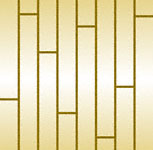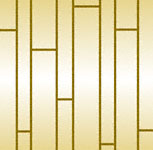Wood Color
Wood colors can range widely. One should remember that wood color can vary not only from one species to another but can have several tens of tonal correlations within one species. Wood is colored by tanning agents contained in its cellular tissue. Wood species of warm colors prevail (yellow, ocherous, red, red-brown, brown), but there are also green, blue, violet, and black species that are considered exotic in our country.
Wood Shine
Wood shine is the ability of wood to reflect luminous flux from its surface in a certain direction. Different species shine in a different way. Shining is significant in beech, maple, chenar, robinia. Wood shine depends not only on the availability and size of wood rays but also on the character of their location on crossings: the larger are wood rays (in oak for instance) and the denser the wood, i.e. the higher is concentration of wood rays (in maple for example), the more wood will shine. Shadow-light play in one species is seen only on longitudinal stem splitting, in others – on all splittings. It influences greatly decorative wood qualities making it more or less expressive; therefore, wood shine is taken into account when designing mosaic sets.
Wood Texture
Wood texture is natural pattern of wood grain on a processed surface dependent on the peculiarities of its structure. Texture depends on the peculiarities of anatomic structure of individual species of wood and cut direction. It is defined by the width of annual rings, the difference of earlywood and latewood, the availability of wood rays, large tracheas, abnormal grain setting (wavy or interwoven). 











